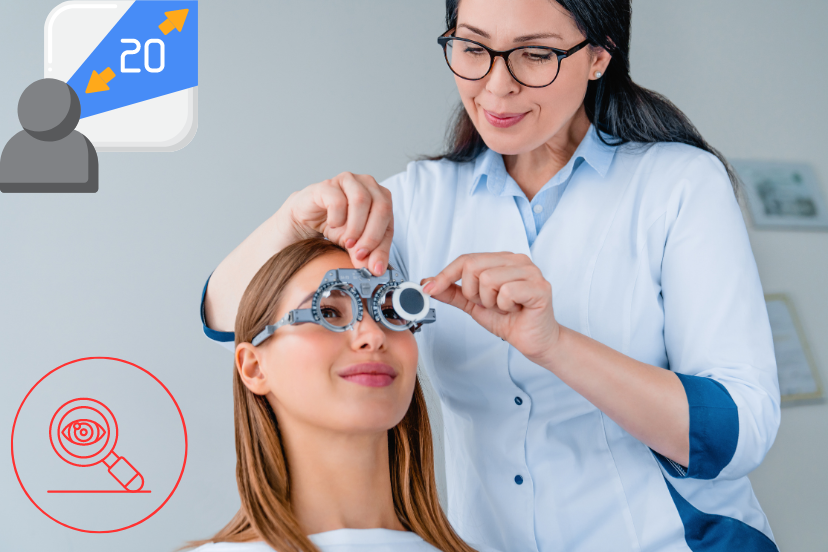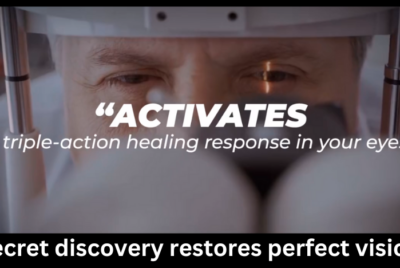Is 20/30 Vision Good
Curious about your eyesight and Is 20/30 vision good for you? Discover how to improve your eyes health and get expert advice. As an advisor on vision health, I understand the importance of maintaining good eyesight for a fulfilling life. Many people wonder if a 20/30 vision is considered good, and in this article, I will provide helpful suggestions and reasons to help you better understand this aspect of your vision.
Introduction To Is 20/30 Vision Good
Having a clear and healthy vision is vital for our daily activities and overall well-being. One common measurement used to assess visual acuity is the 20/20 vision standard, where a person can see letters from a distance of 20 feet, and a person with normal vision should be able to see at the same distance. However, not everyone has a 20/20 vision, and you might have come across the term “20/30 vision.”
Understanding 20/30 Vision
What Does A 20/30 Vision Mean?
In vision health, the term “20/30 vision” refers to a person’s ability to see objects clearly at a distance of 20 feet that a person with normal vision can see at 30 feet. This means that while someone with 20/20 vision can see an object from 30 feet away, a person with 20/30 vision needs to be closer to 20 feet to see the same object with the same clarity.
20/30 Vision Nearsighted Or Farsighted
With 20/30 vision, a person might be slightly nearsighted, meaning they can see objects up close more clearly than those far away. It indicates a slight blurring of distant vision.
What Does 20/30 Vision Look Like?
With 20/30 vision, objects appear clear at 20 feet, and individuals with normal vision can see clearly at 30 feet. It means slightly less sharpness but generally allows normal daily activities without major visual hindrances.
Is 20/30 Vision Considered Good?
Whether a 20/30 vision is good depends on the context and the individual’s needs. For many people, 20/30 vision may be sufficient for their daily activities, and they might not experience significant difficulties in their vision-related tasks.
Remember that 20/30 vision does not necessarily indicate poor eyesight. Instead, it means that your eyesight is slightly below the standard 20/20 measurement. However, it’s always best to consult an eye care professional to interpret your vision test results and get personalized advice accurately.
Does 20/30 Vision Require Glasses?
Whether 20/30 vision requires glasses depends on the individual’s specific visual needs and preferences. Individuals with 20/30 vision may not require glasses for daily activities, as they can see reasonably well without significant difficulty. However, some people with 20/30 vision may benefit from wearing prescription glasses, especially if they experience eye strain or have specific visual demands. An eye care professional can provide guidance based on a comprehensive eye examination, determining if corrective eyewear is necessary to optimize vision and enhance overall eye comfort.
Factors Affecting 20/30 Vision
Several factors can influence a person’s visual acuity and contribute to 20/30 vision. As we age, changes occur in our eyes, leading to a gradual decline in vision. Additionally, refractive errors like nearsightedness (myopia) or farsightedness (hyperopia) can affect how clearly we see objects at various distances.
Importance Of Regular Eye Exams
Regular eye exams play a crucial role in maintaining good vision health. These exams can detect vision issues at an early stage, allowing for timely intervention and treatment. It is advisable to schedule an eye examination at least once a year to ensure your eyes are in optimal condition.
Improving And Maintaining 20/30 Vision
If you have 20/30 vision or want to enhance your eyesight, there are various steps you can take to improve and maintain your vision health.
Tip 1: Follow A Healthy Lifestyle
A balanced diet, regular exercise, and adequate sleep contribute to overall well-being, including eye health. Foods rich in nutrients like vitamins A, C, and E and omega-3 fatty acids can support good vision.
Tip 2: Wear Corrective Eyewear
For individuals with 20/30 vision or other refractive errors, wearing prescription glasses or contact lenses can significantly improve their ability to see clearly.
Tip 3: Perform Eye Exercises
Exercising your eyes can help strengthen eye muscles and improve focus. Simple exercises like focusing on a distant object, then looking at something up close can be beneficial.
Tip 4: Protect Your Eyes
Protect your eyes from harmful UV rays by wearing sunglasses when outdoors. Additionally, use safety goggles when engaging in activities that could pose a risk to your eyes.
Eyewear Options For 20/30 Vision
For those with 20/30 vision, eyewear options can be beneficial to enhance their visual clarity.
Prescription Glasses
Prescription glasses are a popular choice for correcting refractive errors. They come in various designs and materials to suit individual preferences.
Contact Lenses
Contact lenses are another option for individuals who prefer not to wear glasses. They offer convenience and a natural field of view.
Exercising Your Eyes
Like any other body part, your eyes also benefit from exercise. Eye exercises can help enhance muscle strength and flexibility, improving vision.
Exercising your eyes is a beneficial practice to maintain good vision health. Simple eye exercises can help strengthen eye muscles and reduce eye strain, particularly in today’s digital age with increased screen time. The 20-20-20 rule helps alleviate eye fatigue. Additionally, Regular eye exercises can enhance focus, flexibility, and overall eye comfort, improving visual acuity and long-term eye wellness.
The 20-20-20 Rule
One effective eye exercise is the 20-20-20 rule. Every 20 minutes, look at something 20 feet away for 20 seconds. This exercise helps reduce eye strain, especially during prolonged screen time.
Eye Rolling
Gently roll your eyes clockwise and counterclockwise several times to alleviate eye tension and improve circulation.
Diet And Nutrition For Good Vision
A well-balanced diet is essential for maintaining good vision health.
Foods For Healthy Vision
Carrots: Rich in vitamin A, which is vital for good vision.
Spinach and Kale: Contain antioxidants that protect the eyes from harmful substances.
Citrus Fruits: Provide vitamin C, which supports the health of blood vessels in the eyes.
Natural Supplements For Better Vision
Natural supplements can support better vision and overall eye health. Nutrients like vitamins A, C, and E are essential for maintaining healthy eyesight. Vitamin A is known to promote night vision and protect the cornea, vitamin C is an antioxidant that helps combat oxidative stress and supports the health of blood vessels in the eyes, and vitamin E may reduce the risk of age-related macular degeneration. Omega-3 fatty acids also play a crucial role in eye health, reducing the risk of dry eyes and supporting retinal function. Incorporating these nutrients through a balanced diet or supplements can improve vision and eye wellness.
Nutrients That Support Eye Health
Several nutrients play a vital role in supporting eye health. Including these nutrients in your diet can help maintain good vision and reduce the risk of certain eye conditions. Some essential nutrients for eye health include:
- Vitamin A: Critical for night vision and maintaining the cornea’s health.
- Vitamin C: An antioxidant that helps protect the eyes from oxidative damage and supports the health of blood vessels in the eyes.
- Vitamin E: This antioxidant may reduce the risk of age-related macular degeneration.
- Omega-3 Fatty Acids: These support retinal function and help reduce the risk of dry eyes.
- Zinc: Important for transporting vitamin A from the liver to the retina.
- Lutein and Zeaxanthin: Carotenoids that help protect the eyes from harmful blue light and oxidative stress.
- Zeaxanthin and Meso-Zeaxanthin: Carotenoids that can protect the central part of the retina from damage.
You can find these nutrients in various foods like leafy greens, colorful fruits and vegetables, nuts, seeds, fish, and fortified cereals. Including different nutrient-rich foods in your diet can promote good eye health and overall well-being.
Protecting Your Eyes
Protecting your eyes from various environmental hazards is crucial for maintaining good vision health.
UV Protection
Excessive exposure to UV rays can harm your eyes and increase the risk of cataracts and other eye conditions. Always wear sunglasses with UV protection when outdoors.
Safety Measures
Wear appropriate eye protection to prevent potential injuries when engaging in sports or DIY projects.
Is 20/30 Vision Good Or Bad?
Whether 20/30 vision is good or bad depends on individual needs and daily activities. While it falls slightly below the standard 20/20 vision, many people with 20/30 vision can function well in their daily tasks without significant issues. For some, it might be sufficient, while others may prefer sharper vision. Regular eye check-ups are crucial to ensure optimal eye health and determine if any corrective measures are necessary. Consulting an eye care professional will provide personalized insights into the significance of 20/30 vision for an individual’s lifestyle and well-being.
What Are The Common Causes Of Eye Strain?
Eye strain, also known as asthenopia, can result from various factors, including:
- Extended Screen Time: Prolonged use of digital devices like computers, smartphones, and tablets can strain the eyes due to constant focusing and blue light exposure.
- Incorrect Glasses or Contacts: Wearing outdated or incorrect prescription eyewear can cause eye strain as the eyes work harder to focus.
- Poor Lighting: Insufficient or harsh lighting can stress the eyes, especially when reading or working in dimly lit environments.
- Reading for Long Periods: Continuous reading without breaks can fatigue the eye muscles.
- Dry Eyes: Insufficient tear production or excessive screen time can lead to dry eyes, causing discomfort and strain.
- Lack of Blinking: Staring at screens for extended periods may reduce blinking, leading to dryness and eye strain.
- Uncorrected Vision Problems: Refractive errors like nearsightedness or farsightedness, if not corrected, can strain the eyes during visual tasks.
- Poor Ergonomics: Incorrect posture while using computers or reading can contribute to eye strain.
- Excessive Brightness: Glare from bright light or screen reflections can strain the eyes.
- Fatigue and Stress: General fatigue or stress can exacerbate eye strain symptoms.
To alleviate eye strain, take regular breaks from screens, ensure proper lighting, maintain the correct eyewear prescription, and practice the 20-20-20 rule—looking at something 20 feet away every 20 minutes for 20 seconds. If eye strain persists or worsens, consult an eye care professional for a comprehensive eye examination.
Eye Exercises To Improve Eye Muscle
Several common eye exercises can help improve eye muscle strength, flexibility, and overall eye health. Some of these exercises include:
- 20-20-20 Rule: Every 20 minutes, take a 20-second break from screens and focus on an object 20 feet away to reduce eye strain.
- Eye Rolling: Gently roll your eyes in a circular motion clockwise and counterclockwise to relax eye muscles.
- Palming: Rub your palms together to generate warmth and place them gently over closed eyes to relax and soothe eye muscles.
- Near-Far Focus: Alternate between focusing on a nearby object and then on a distant object to improve focus flexibility.
- Blinking: Blink regularly to keep the eyes moist and prevent dryness.
- Figure 8 Eye Exercise: To improve eye coordination, imagine an “8” on its side and trace it with your eyes.
- Distance Gazing: Look out the window or into the distance for a few minutes to give your eyes a break from close-up work.
- Zooming: Focus on an object held at arm’s length and gradually bring it closer to your nose while maintaining focus.
Remember that eye exercises are not a cure for vision problems but can help reduce eye strain and improve overall eye comfort. It’s essential to consult an eye care professional before starting any eye exercise regimen, especially if you have specific vision issues.
Is 20/30 Vision Good – Conclusion
In conclusion, 20/30 vision can be considered good for many individuals, as it allows them to perform daily tasks without significant challenges. However, it’s essential to remember that every person’s vision needs are unique, and regular eye exams are crucial to ensure optimal eye health.
Remember to follow a healthy lifestyle, wear corrective eyewear if needed, perform eye exercises, and protect your eyes from harmful elements. By taking proactive steps, you can maintain good vision and health and enjoy the world around you with clarity and confidence.
Please note that this article should not replace professional medical advice. Consult a healthcare professional for an accurate diagnosis and tailored treatment plan.
Frequently Asked Questions (FAQs)
Can I achieve a 20/20 vision if I have a 20/30 vision now?
While it might be possible to improve your vision, achieving a 20/20 vision depends on various factors. Consult an eye care professional to understand your specific case better.
Is 20/30 vision considered a visual impairment?
20/30 vision is slightly below the 20/20 standard but is generally not classified as a visual impairment. However, monitoring your vision regularly and seeking professional advice if needed is essential.
Can eye exercises cure my refractive error?
Eye exercises can help strengthen eye muscles and improve focus, but they may not eliminate refractive errors entirely. Consult an eye care professional for suitable treatment options.
How often should I have my eyes checked?
It is recommended to have your eyes checked by an eye care professional at least once a year, even if you have good vision. Regular eye exams can detect potential issues early on.
Are there any natural supplements for better vision?
While some nutrients like vitamins A, C, and E and omega-3 fatty acids are beneficial for eye health, it’s essential to consult a healthcare provider before taking any supplements.
Is 20/40 vision bad?
A 20/40 vision is generally considered subpar but may allow for functional vision. Regular eye exams can help determine if corrective measures are needed.
Extra 5 FAQs Related To Is 20/30 Vision Good
What is a 20/30 vision prescription?
A 20/30 vision prescription means that corrective lenses are needed to achieve normal visual acuity. The prescription helps the person see clearly at 20 feet what a person with normal vision can see at 30 feet.
Is 20/25 vision good?
Yes, 20/25 vision is generally considered good. It means you can see at 20 feet what a person with normal vision can see at 25 feet.
Is 20/30 vision bad for a child?
A 20/30 vision in a child is generally considered acceptable for normal daily activities. However, regular eye check-ups are essential to monitor vision development and address any potential concerns early on.
Is 20/30 vision better than 20/60?
Yes, 20/30 vision is better than 20/60 vision. With 20/30 vision, you can see objects at 20 feet that a person with normal vision can see at 30 feet, whereas with 20/60 vision, you can see at 20 feet what a person with normal vision can see at 60 feet, indicating poorer visual acuity.
Is 20/10 vision good?
Yes, 20/10 vision is excellent. It means you can see at 20 feet what a person with normal vision can see at 10 feet, indicating exceptional visual acuity.




